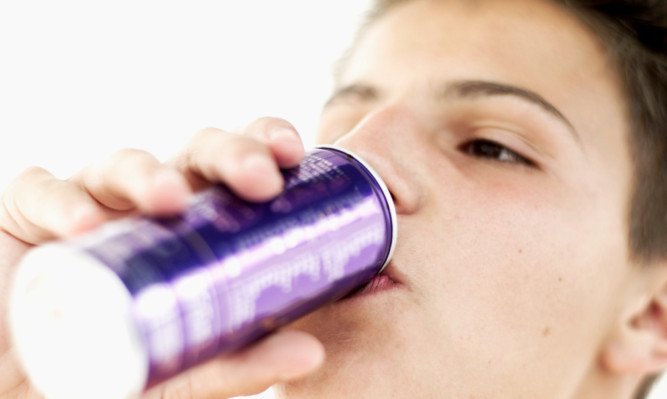High-energy drinks may cause a wide range of health risks to children, yet at the moment there is nothing to stop under-16s drinking as much as they like. Caroline Lindsay looks at the issue.
Tighter controls to prevent children under 16 consuming high-caffeine energy drinks are being called for by health experts. Any product with a caffeine level of more than 150mg per litre should be banned for sale to under 16s research shows the drinks have been linked to adverse effects, including confusion, rapid heartbeat, seizures and even death.
At present, the UK Food Standards Agency advises that “children, or other people sensitive to caffeine, should only consume in moderation drinks with high levels of caffeine” but apart from that, there is no guidance except for the wording on product packaging to emphasise that it is “not recommended” for children and pregnant women.
The problem is investigated in a BBC programme on Wednesday night and reveals that although manufacturers say they shouldn’t be drinking them, European Food Safety Agency research suggests they are figures indicate that more than two-thirds of the UK’s 10 to 18-year-olds have drunk high-caffeine energy drinks.
There are 22mg of caffeine in a 330ml can of coke and from around 80mg in a 250ml high-energy drink can 320mg per litre.
Angela Craigie of the Centre for Public Health Nutrition Research at Ninewells Hospital in Dundee points out: “A report from Australia last year revealed that calls to a poison unit triggered by toxicity caused by drinking high-energy drinks had risen from just 12 a year in 2004 to 290 in 2012.
“However, it’s not clear whether it is the caffeine alone which can cause problems or if other ingredients in the drinks are to blame, especially if mixed with other substances, like alcohol.”
What is clear, however, is that when these drinks are used in conjunction with intense exercise they can, somewhat ironically, actually cause dehydration.
As well as the danger posed by high levels of caffeine, Angela stresses that it’s also vital to consider the sugar content of these soft drinks as they are associated with weight gain and obesity.
So what exactly is caffeine?
A naturally occurring chemical stimulant called trimethylxanthine, its energising qualities were recognised as early as 800AD.
Many of us can’t function first thing in the morning without that first cup of coffee and countless generations of students have used coffee, and now high-energy drinks, to help them stay awake to study.
Ted Kallmyer of caffeine authority www.energyfiend.com recognises that caffeine is a drug and needs to be respected.
“However,” he adds, “it is one of the oldest and most largely used substances on the planet. The general consensus of thousands of studies is that caffeine is safe in moderation, which is about 200 400mg per day for most people.
“However, because of the plethora of caffeinated products in the marketplace this safe limit can easily be exceeded without the consumer even realising it until they begin to exhibit overdose symptoms or withdrawal symptoms.
“As far as the subject of energy drinks and minors, this is a contentious issue at the moment. The balance between a free marketplace and the health of the consumer is always a fine line. While energy drinks are probably not the ‘monsters’ many are making them out to be, they can cause potential problems when they find their way into the hands of minors. Despite the best parenting and product labelling, kids will still make unhealthy decisions and potentially over-consume energy drinks.
“The fact that these beverages are designed to have a sweet and fruity taste makes energy drinks as easy to drink as fizzy drinks, but they deliver usually about 160mg of caffeine per 500ml can. The caffeine and sugar dose from consuming more than the recommended amount during a 24-hour period can cause problems for anyone, especially teens due to their often lower body weight and potentially undiagnosed medical conditions.
“The industry would say that they market to the young adult demographic, but there is definitely some crossover into the teen and even pre-teen segment because of their endorsements of extreme sports and concert events.
“It would be nice if the industry would self-regulate ahead of possible Government regulations. In any event, there probably is the need for some protections to be put into place so that minors will not be able to so readily buy and consume energy drinks just as they would other beverages.”
BBC Scotland Investigates: Caffeine Nation is on BBC One Scotland on Wednesday at 7.30pm, and is available on the iplayer afterwards.
